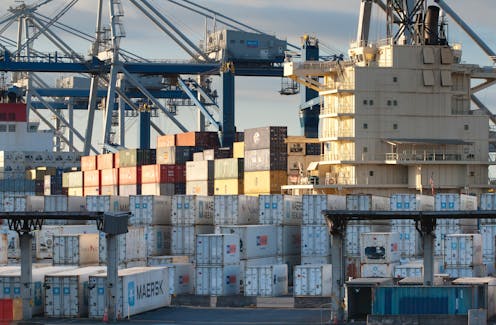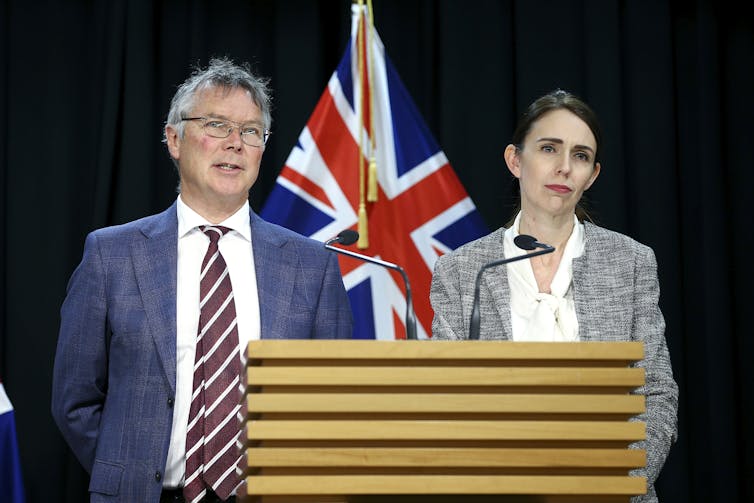
The free trade agreement (FTA) signed between New Zealand and the United Kingdom this week demonstrates the intransigence of political leaders and their official advisers in the face of concerted demands to rethink the country’s trade policy paradigm.
Those demands reached a high point with the deeply unpopular Comprehensive and Progressive Agreement for Trans-Pacific Partnership (CPTPP), which was rescued from the even more unpopular Trans-Pacific Partnership Agreement (TPP) after the US had quit.
Opposition to the TPP/CPTPP was part of an international backlash that saw a series of high-profile negotiations abandoned or seriously stalled.
These included the EU’s mega-deal with the US for the Trans-Atlantic Trade and Investment Partnership (TTIP), the Trade in Services Agreement (TiSA) across 23 mainly rich parties, the Canada and EU Trade Agreement (CETA) and others.
As I wrote in The FIRE Economy in 2015, this backlash was part of a broader rejection of neoliberal globalisation and the massive private power accumulated by global capital, especially finance capital.
The global financial crisis had brought a human face to structural wealth and income inequality in Anglo-American countries (as Thomas Piketty documented in his book Capital in the 21st Century), and to its unequal gender and race impacts.

‘Inclusive trade’
Free trade agreements were powerful vehicles to advance and lock in that failed model. Multinationals could even sue host governments offshore through investor-state dispute settlement (ISDS) arbitration for moves that undermined their value or profits.
Equally, the secrecy under which trade pacts were negotiated, and the fetters they put on future governments’ policy options, were an affront to democracy and self-determination.
Read more: New Zealand is overdue for an open and honest debate about 21st-century trade relations
So Labour faced a quandary when it formed a government in October 2017. Having voted against the ratification of the TPPA, it scrambled to justify its U-turn to support the CPTPP as “progressive”.
In April 2018, the then trade minister, David Parker, announced “Trade for All”, a slogan borrowed from the EU, to develop a “progressive and inclusive” trade agenda. A year later he appointed the Trade for All Advisory Board, which delivered its moderate report and recommendations in November 2019.
The government took another seven months to respond. Meanwhile, New Zealand continued pursuing its usual agenda through the 16-country Regional Comprehensive Economic Partnership, in the World Trade Organisation, in negotiations with the EU – and in informal pre-Brexit talks with the UK.
The one significant change was Labour’s decision not to include ISDS provisions in future agreements.
Trade and the Treaty
Predictably, the government adopted the advisory board’s “soft” recommendations that could be accommodated within the existing trade policy paradigm, including new chapters on “inclusive trade”.
But the government rejected recommendations that could make a substantive difference. These included a moratorium on new commitments pending a comprehensive review of digital trade policy, and reviewing the widely criticised Te Tiriti o Waitangi/Treaty of Waitangi exception that allows “more favourable treatment” to Māori, subject to various conditions, but does not protect treaty compliance measures more generally.
Read more: The UK wants to join a Pacific trade deal – why that might not be a risk worth taking
Also rejected was a proposal that the “national interest analysis”, which accompanies any FTA text to parliament, be prepared independently rather than by the trade ministry that negotiated it.
Since then, the pandemic has fuelled calls to waive intellectual property rules in trade agreements that guarantee Big Pharma’s patents over medical supplies. The UK and EU oppose the waiver.
In December 2021 the Waitangi Tribunal found the CPTPP’s electronic commerce chapter, especially its rules on offshoring of data, which are now standard in many FTAs, breached the Crown’s Treaty of Waitangi obligations.
‘Clip-on’ agreements
That context explains what we see in the new UK FTA. Of its 33 chapters, two-thirds could be largely cut and pasted from the TPPA.
Those chapters constrain the future policy and regulatory options available to governments on (among other things) import tariffs, food labelling and standards, intellectual property rights, investment, financial services, state-owned enterprises and government procurement.
Many remaining chapters on trade and gender, Māori, development, and small and medium enterprises are clustered under an “inclusive trade sub-committee”. While these are new to New Zealand’s agreements, they mirror the “inclusive trade” agenda designed by the EU, Canada and others to defuse the backlash against these deals.
I describe these chapters as “clip-ons”. None is enforceable. Most promise to co-operate on sharing “best practice”, ensuring access to information, promoting exchanges and facilitating opportunities to take advantage of an agreement that works for big business more than ordinary consumers.
The preamble and the Māori trade chapter “note” the UK was the original signatory to Te Tiriti o Waitangi, but eschew any ongoing obligations. The UK rejects any inference that it recognises Māori genetic resources and traditional knowledge as forms of intellectual property, or that these affect the UK’s laws.
A footnote records that the UK has no legal or financial obligation to explore or undertake any of the proposed co-operation activities.
The labour and environment chapters reiterate existing international obligations. Each country promises to comply with its domestic laws and try not to dilute them to get a trade or investment advantage, and to promote voluntary corporate social responsibility. These chapters are enforceable through a tailored dispute process.
Did NZ try for a better deal?
Maybe New Zealand’s negotiators sought to do more that was genuinely progressive, but the secrecy surrounding the negotiations means we will never know.
The government must be judged on the deal it agreed to – which fails to confront the need for more fundamental reform, compounded by allowing a mere ten days for submissions on the 1,700-page text.
And for what? There are the usual grand headlines that the FTA is worth NZ$1 billion to exporters with a 50% increase in exports to the UK.
But the government’s own economic modelling projects a mere 0.3% increase on current GDP when the agreement comes into force fully – a rate of 0.02% per year over 15 years. Hardly a bonanza.
Jane Kelsey is a pro bono technical adviser for the Ngā Toki Whakarururanga on trade policy and negotiations.
This article was originally published on The Conversation. Read the original article.







